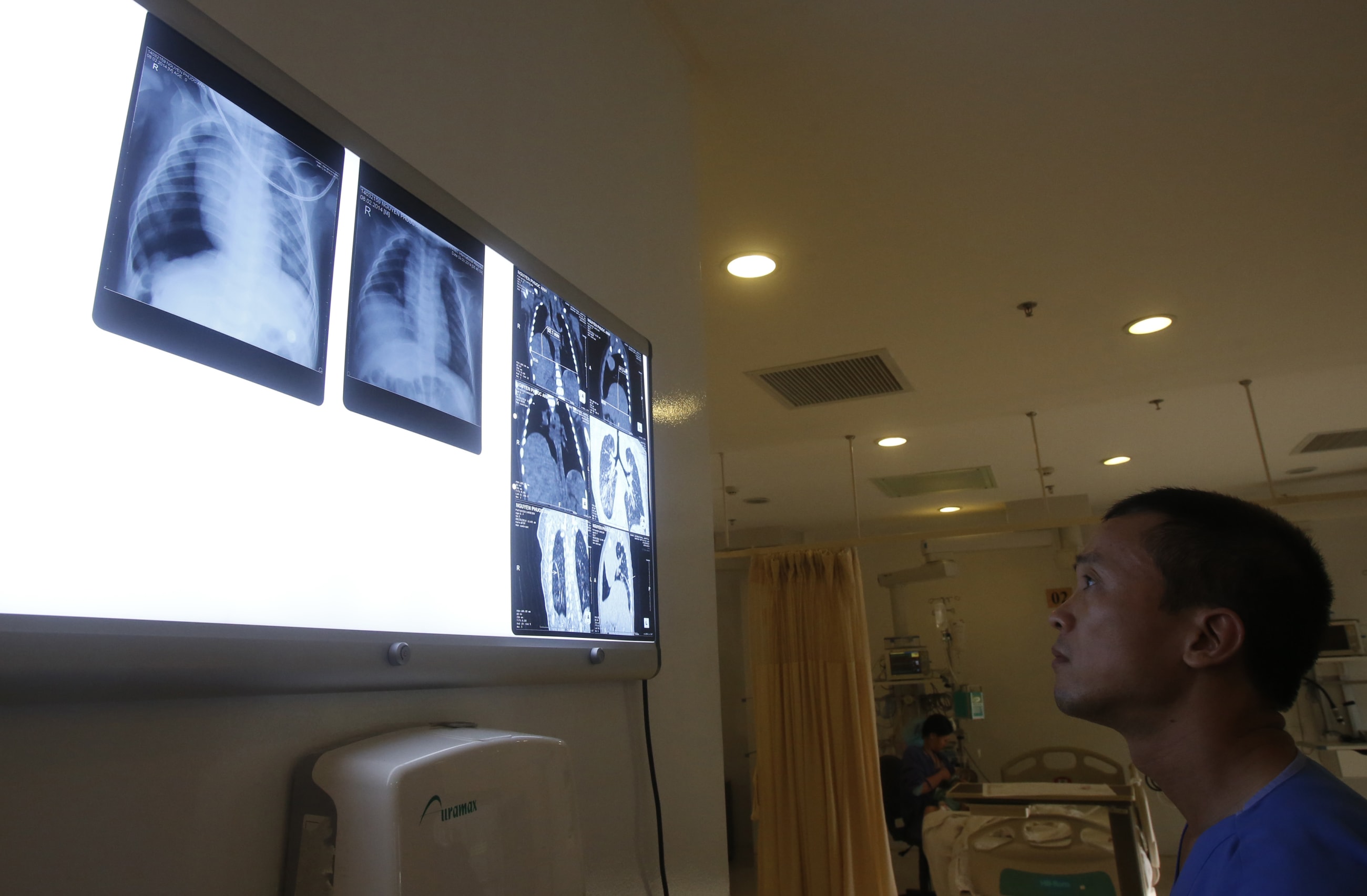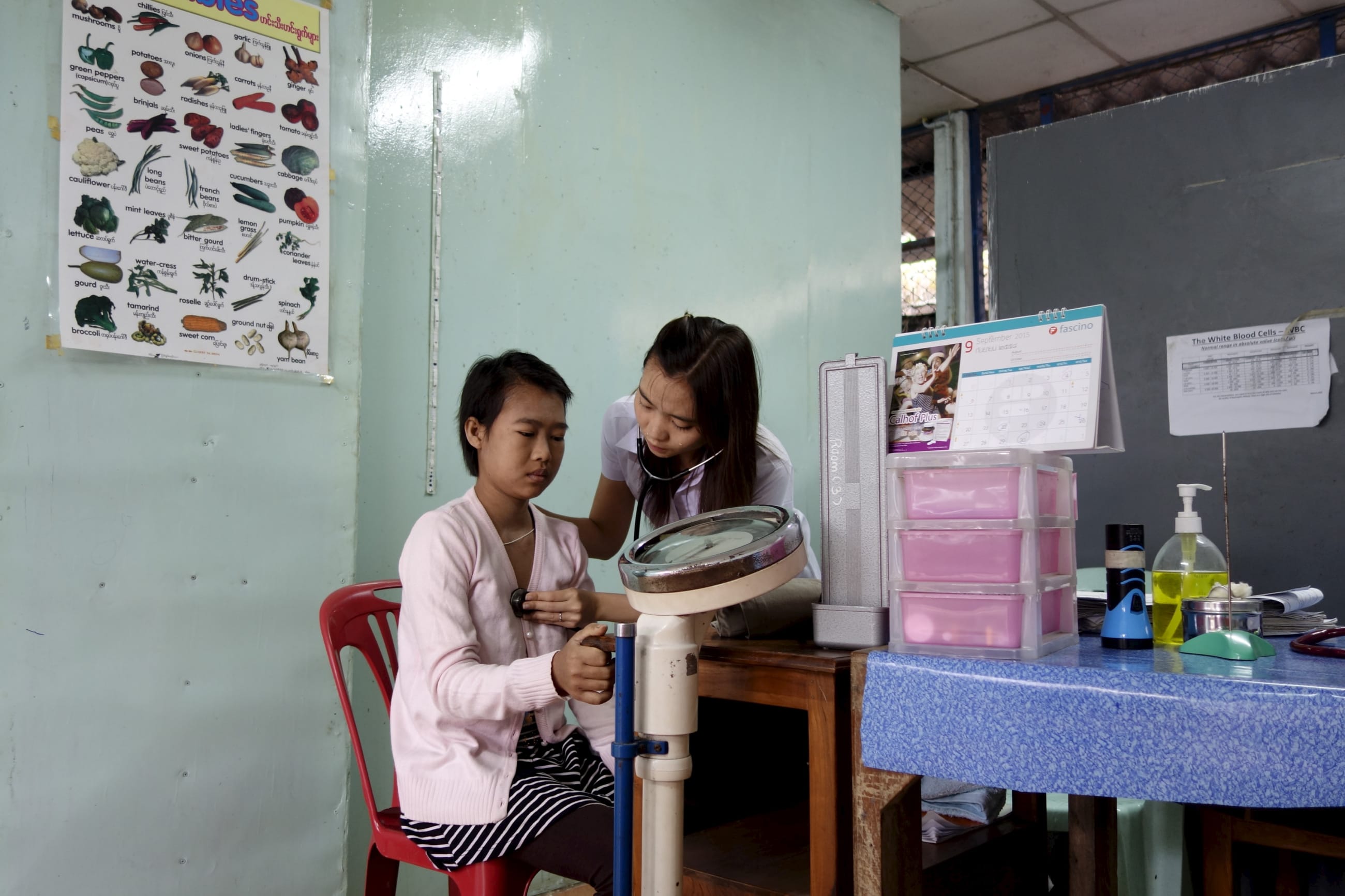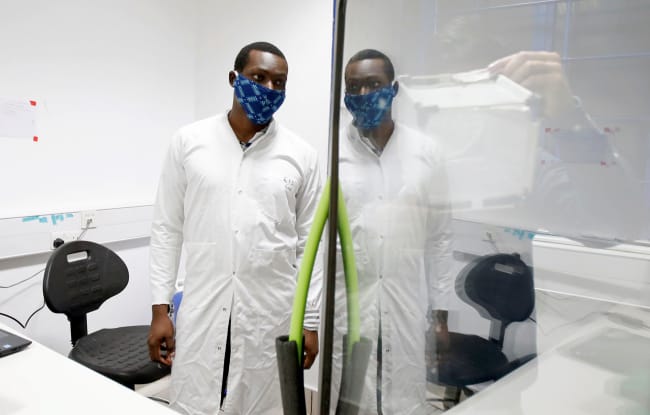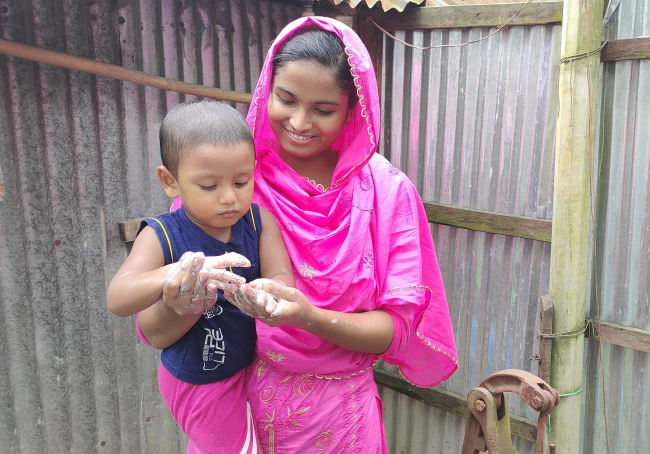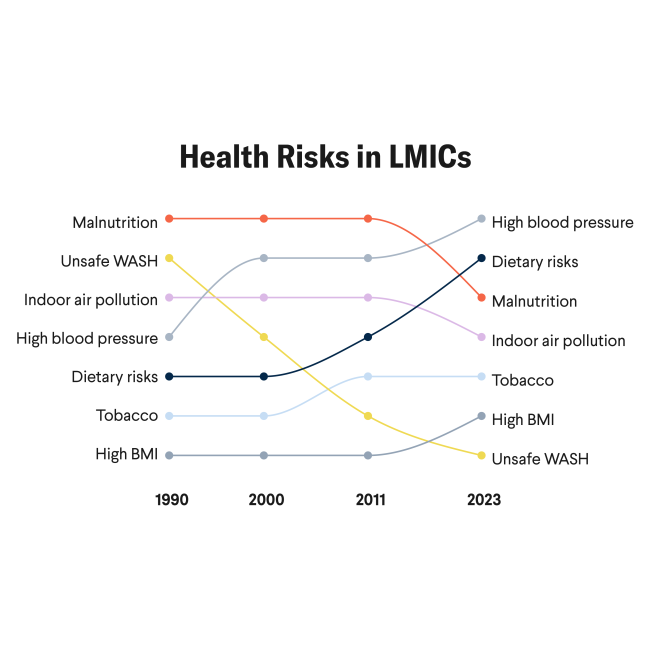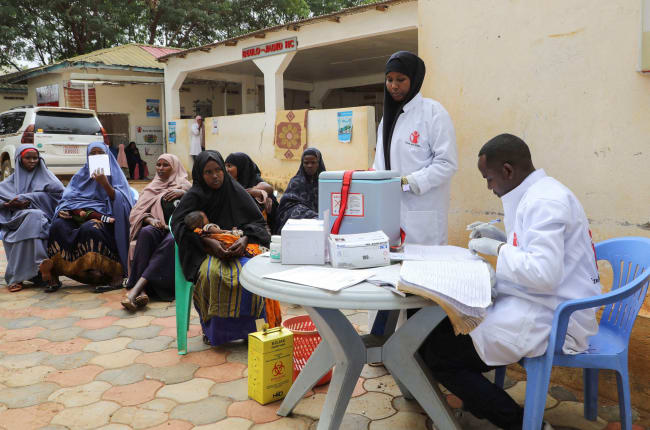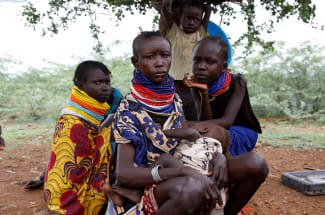Over the past three decades, global health has made remarkable gains. Child mortality declined more than 50%, from 12.5 million deaths in 1990 to 5 million in 2021. Scores of additional mothers, on the scale of hundreds of thousands worldwide, now survive childbirth—mortality rates having dropped, from 328 deaths per 100,000 live births at the start of the century to 197 per 100,000 in 2023. This preservation of life stems largely from stronger primary health-care systems, expanded immunization coverage, and increased access to essential services for women and children.
Despite this progress, countries remain off track in achieving universal health coverage (UHC). Today, shifting geopolitical priorities and drastic cuts in global health financing risk reversing decades of achievements. The aspiration to "leave no one behind" [PDF], central to UHC and Sustainable Development Goal 3, is under serious threat.
Global health systems, however, have been shortsighted, largely reactive, and disease-specific. They have prioritized hospital-based, curative interventions over cost-effective preventive and promotive services. This consumption-driven model is both expensive and unsustainable, particularly for low- or middle-income countries (LMICs). As fiscal pressures mount, the call is growing to shift from health consumption to health production, investing in people-centered systems rooted in equity, prevention, and community leadership.
To be effective, international cooperation should align with national priorities directed toward strengthening primary care systems. New models of financing, collaboration, and knowledge sharing can shape a more equitable and enduring global health paradigm.
New and More Collaborative Ways of Working
Today, 3.3 billion people live in countries where interest payments on public debt exceed government spending on health or education. Without tackling this debt crisis and supporting countries to invest in their own systems, health inequities will widen, and progress toward universal health coverage will stall.
Hefty cuts in official development assistance for health, especially from traditional donors, are creating urgent funding shortfalls across low- and middle-income countries. Major funders, including the United States and several European nations, are scaling back bilateral support or reassessing commitments to multilateral agencies, threatening to reverse hard-won developments in disease control and global health security. The Netherlands plans to cut 8 billion euros ($9.3 million) over four years, including 1 billion euros ($1.6 million) designated for civil society. The European Union will reduce aid by 2 billion euros ($2.3 billion) over the next two years; France and Germany have slashed aid budgets by 1 billion euros and 2 billion euros, respectively, signaling a broader retreat from global health financing.
To be effective, international cooperation should align with national priorities directed toward strengthening primary care systems
According to the World Health Organization (WHO), U.S. funding cuts alone could result in 15 million additional malaria cases and more than 100,000 preventable deaths globally this year. HIV counterefforts could also suffer, projections suggesting 10 million new infections and up to 3 million related deaths. Beyond these grim numbers lies a deeper threat: the destabilization of already fragile health systems and the widening of health inequities especially among vulnerable populations such as women, young children, and adolescents. These cuts risk derailing essential health services—preventive care, community health programs, and related supply chains. Many of these services in LMICs depend on external financing.
The 2014 Ebola crisis in West Africa, the early months of COVID-19, and the recent mpox epidemic exposed the deadly cost of neglecting primary care and public health infrastructure. During COVID-19, governments learned that one country's health is inseparable from that of others, underscoring that global solidarity is essential to lowering the global health burden.
In late April, the United Nations Economic and Social Council hosted the 2025 Forum on Financing for Development and discussed a resolution on global health financing. Attendees made an urgent call for change, declaring that it's time to move beyond fragmented aid toward smarter, systems-based investments that build long-term resilience.
Strengthening Integrated Health Systems
Global health aid has been traditionally dominated by vertical programs—highly targeted interventions focused on diseases such as HIV/AIDS, tuberculosis, or malaria. Although these programs have saved lives and improved well-being, they often bypass opportunities and investments to strengthen national health systems, especially in resource constrained nations. These fragmentations led to challenges in coordination, resource allocation, and health system strengthening where donor priorities were preferred over national priorities.
Countries such as India, Malaysia, Thailand, and Vietnam offer valuable lessons in transitioning toward integrated health systems underpinned by sustainable domestic and global financing models.
India has advanced toward integrated health systems by implementing digital health records under the Ayushman Bharat Digital Mission (ABDM), expanded insurance coverage, and strengthened public infrastructure with central and state funding and schemes such as PM-JAY. Malaysia is pursuing reforms as outlined in its Health White Paper, which emphasizes pooling resources into a dedicated health fund and building a hybrid system that balances public and private care.
Thailand has demonstrated the power of stable public financing by unifying its insurance schemes and investing in a strong primary care network to create an integrated model that ensures equity and access across the population. Vietnam has successfully transitioned from donor dependence by integrating HIV and TB services into its Social Health Insurance, steadily increasing domestic financing and moving toward universal health coverage.
Their progress reflects a strategic shift from interventions to system strengthening, aligning with global principles of aid effectiveness outlined in the Paris Declaration (2005), Busan Partnership (2011), and the Addis Ababa Action Agenda (2015). These frameworks emphasize country ownership, alignment, harmonization, results-based management, and mutual accountability, all critical to building resilient, integrated health systems that can withstand future shocks.
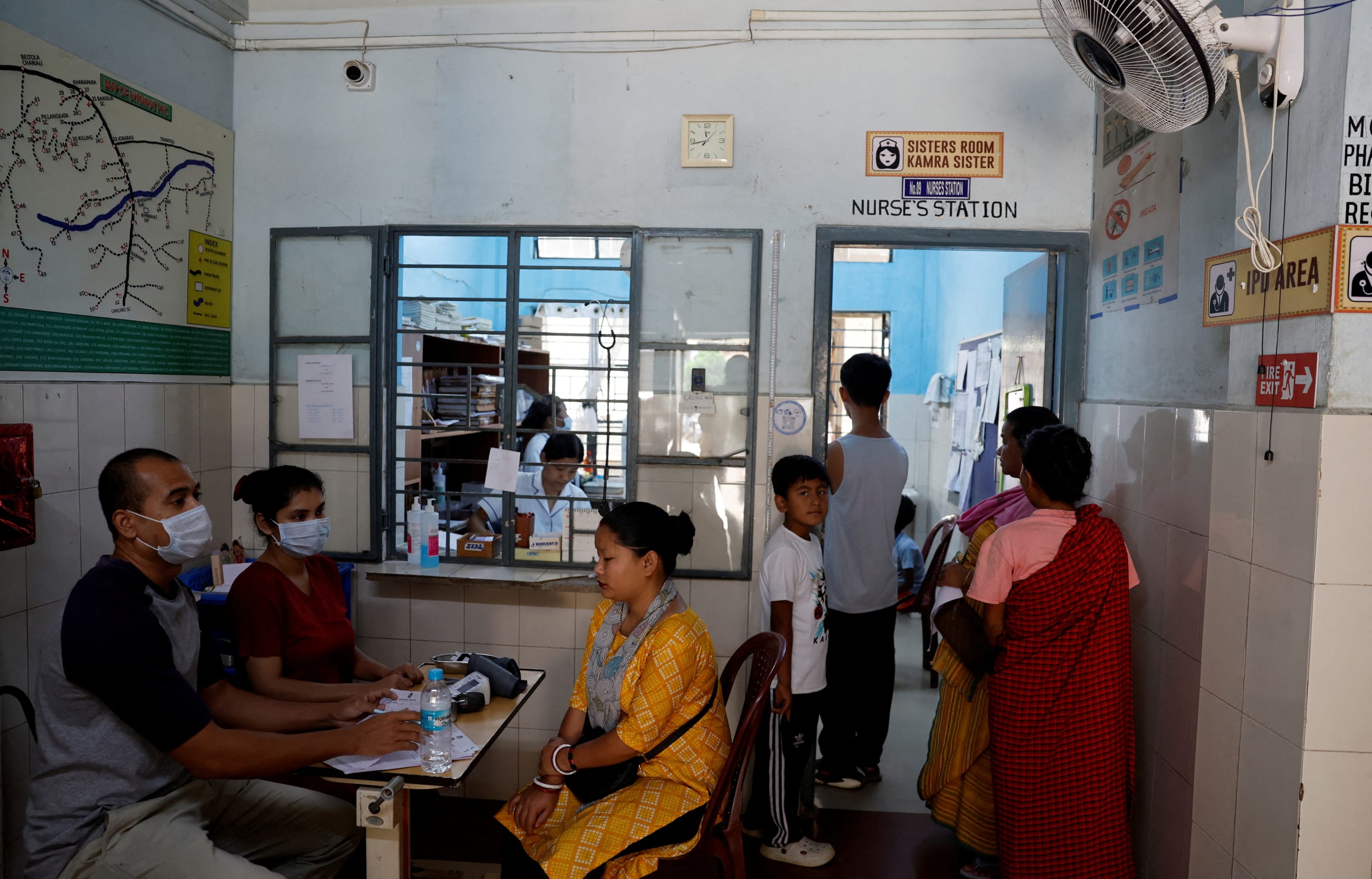
According to the WHO 2024 Global Health Expenditure Report, the average per capita government spending on health in all country income groups fell from 2021 to 2022 after a surge in the early pandemic years. That trend should be reversed to ensure that countries meet the goal of UHC. By balancing private and public investments in health, governments can stretch limited national budgets while leveraging private-sector resources, expertise, and innovation. At the same time, robust public oversight is essential to preventing misappropriation of funds and misplaced priorities, ensuring that available resources are used effectively. Strengthened accountability, combined with knowledge sharing, can improve efficiency, generate better returns on investment, and build local capacity for more resilient health systems.
Innovative financing can improve domestic resource mobilization, strengthen effective use of subsidies, and optimize tax systems. Innovative financing mechanisms include development impact bonds (DIBs) and sovereign health funds. DIBs are financed by private investors who provide upfront capital for health programs and are repaid by governments or donors only if agreed results are achieved. Sovereign health funds, by contrast, are financed by allocations from national revenues such as taxes, natural resource earnings, or budget surpluses and then invested to generate sustainable returns that can be reinvested into strengthening health systems.
Successful innovative financing should focus on global public goods such as vaccines, diagnostics, treatments, and surveillance systems that offer collective benefits. Instead of scattered project-based aid, countries should coinvest in scalable innovations through platforms such as the WHO, GAVI, CEPI (Coalition for Epidemic Preparedness Innovations), Unitaid, PATH, and others. Indigenously developed vaccines in the Global South for rotavirus, pneumococcal pneumonia, and typhoid [PDF] are great exemplars of public, private, and philanthropic collaboration, leading to high-quality products that also fostered intercountry benefit sharing.
A DIB scheme formulated in India in 2015 that focused on girls' education in Rajasthan showed promising results, exceeding its targets. It achieved 116% of its enrollment goal, bringing 768 out-of-school girls into the education system. Similarly, performance-based financing (PBF) models have been successful in driving broader health reforms and helping fix structural issues in health-care delivery.
Rwanda was among the first low-income countries to implement PBF nationwide. Launched in 2006, the scheme was supported by donor funding [PDF], before transitioning to government budget allocations. It improved prenatal care quality and increased use of institutional delivery and child preventive services, leading to a 23% increase in institutional deliveries. Thailand's model of expanding health insurance coverage to its entire population offers an excellent example for middle-income countries. In 2002, Thailand introduced its Universal Coverage Scheme to provide health insurance to previously uninsured populations, particularly the poor and informal sector. Guided by the principle of equity, the scheme ensured access to essential health services for all, financed primarily through general tax revenues rather than out-of-pocket spending. By reducing catastrophic health expenditures, it safeguarded households from poverty due to medical costs. Crucially, Thailand had already invested in a robust primary health-care system that included community health workers, health centers, and district hospitals, ensuring services were accessible nationwide, especially in rural areas.
The shift in global health financing presents an opportunity for countries in the Global South to collaborate with each other and with those in the Global North at the regional, national, and subnational levels and leverage their cultural, economic, and systemic similarities to replicate successes without duplicating efforts.
In 2007, Germany pioneered the Debt2Health mechanism and has since led multiple debt-for-health swaps, inspiring wider international participation. This financing mechanism enables countries to convert debt into investments in national health priorities. In 2024, Germany and Indonesia, with support from the Global Fund, signed the largest-ever Debt2Health agreement, converting 75 million euros ($87.3 million) of Indonesia's debt into public health investments. This swap is supporting tuberculosis and malaria control, health system infrastructure, and local medicine production in Indonesia.
When integrated in broader national health strategies, innovative financing mechanisms can be applied to other emerging issues, such as mental health, noncommunicable diseases, pandemic preparedness, and climate's impact on health. At the same time, policy measures, such as taxing ultra-processed foods, as suggested in the 2025–26 Economic Survey India [PDF], can generating public revenue, if earmarked for the health sector, and improve population health.
Innovative technology can also strengthen health systems by improving data availability and decision-making for enhancing service delivery and patient outcomes across the care continuum. Digital innovations such as telemedicine and electronic health records are transforming how care is accessed and delivered, especially in remote and underserved regions. India's ABDM is one example. This mission aims to create a unified digital health ecosystem by linking citizens' health records by using a unique identification number across multiple registries. More than 600 million numbers have been issued, positioning ABDM as a transformative model for health.
These innovations, when aligned with local needs and integrated into national health systems, increase their efficiency and future-proof health systems in LMICs to respond to emerging challenges.
